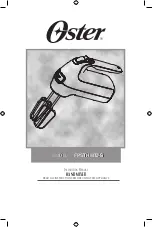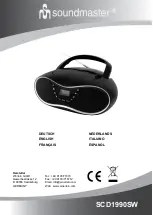
9 - Machine Control—Notes on individual devices
9–8
the
MIDI OUT
port, is controlled using the
Automation Setup
screen.
1
Move the cursor to the
SYNC SOURCE
panel, and select the timecode type
(
30fps
,
25fps
, etc.),
2
Select the
INT
(internal generator) option.
3
While this screen is displayed, and the cursor
is pointing to this bottom section of the
screen, the PODs can be used to set the start
time of the internal generator.
Alternatively, the numeric keypad can be
used for direct entry of the time value, if the
memory location functions are not being
used (and taking over the use of the numeric
keypad).
9.4.2 DTRS devices
Depending on the functionality of the DTRS unit
(DA-88, DA-38 or DA-98), different options, such as
track delay, dither setting, etc. are available, allowing
these menu operations to be carried out easily from
the TM-D4000. Consult the documentation of your
DTRS unit for full details of these operations.
It is essential that only one unit is connected directly
using the
REMOTE OUT
connection from the TM-
D4000 and this should be is ID 1 (0 in the case of
DA-88). It is suggested that the other units in the
chain are numbered in order following this (but this
is not essential). Remember that all chains of DTRS
units should be terminated.
If the DTRS units are to be word clock slaves of the
TM-D4000, the dedicated word clock input of the
DTRS unit connected directly to the TM-D4000
should be connected to the word clock sync output
(
[76]
) of the TM-D4000, and the clock source set to
WORD. Subsequent units in the chain will receive
their word clock information directly through the
REMOTE connections, and do not require dedicated
word clock connections.
9.4.3 8mm DTRS
This setting allows the control of a DTRS unit
through the RS-422 connection, using the P2 proto-
col. This may be useful in certain setups where the
P2 protocol is being used extensively.
9.4.4 ADAT devices
The
SYNC OUT
connector on the IF-LP4000 is used
for controlling ADAT recorders (as selected from the
list of available units). No matter how many ADATs
are connected, only one SYNC connection should be
made from the TM-D4000 to the ADAT chain.
In addition to control information, this also provides
a word clock to the ADAT recorder. This is particu-
larly useful when using the TM-D4000 with ADAT
models which do not have a dedicated word clock
input.
It may take a little experimentation before the best
way of providing a word clock to the system is dis-
covered. ADAT models LX20 and XT20 have a
“LOCK” indicator which can help determine the
most stable configuration.
However, we suggest that ADAT recorders are not
used as clock masters.
In addition, the SYNC word source should be used
when more than one ADAT recorder is connected
(the “lightpipe” clock can cause noise in some chains
of ADATs).
Some models of ADAT recorder (e.g. the LX20 and
XT20 models) will echo the status of their REC
FUNCTION keys on the TM-D4000’s
REC
indica-
tors. However, other models will not echo the status
of their REC FUNCTION keys on the TM-D4000.
In addition, other ADAT settings, such as "all input",
auto monitor, input source, etc. cannot be read by the
TM-D4000.
Also note that it is not possible to add ADAT units
while the TM-D4000 is powered on (it is never a
good idea to connect and disconnect equipment
which is powered on in any case). When adding or
removing ADAT units from a chain, we suggest that
the ADATs are turned on first, in order to establish
their IDs, before turning on the TM-D4000 (and then
the monitoring system).
9.4.5 MIDI Controllers and MIDI Faders
These are covered in the section on MIDI, but basi-
cally, these two settings (MIDI Controllers and MIDI
















































